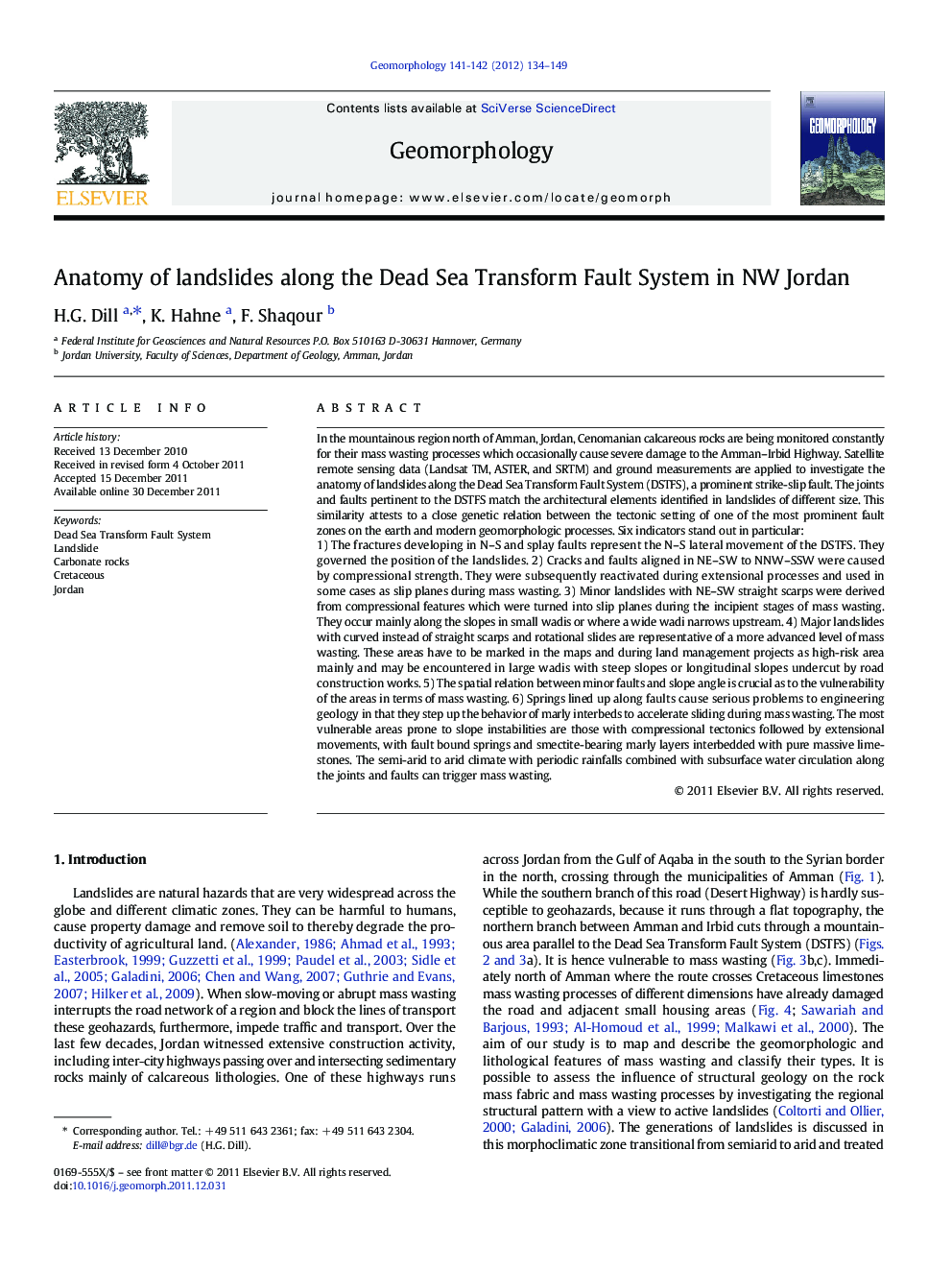| کد مقاله | کد نشریه | سال انتشار | مقاله انگلیسی | نسخه تمام متن |
|---|---|---|---|---|
| 6432963 | 1635488 | 2012 | 16 صفحه PDF | دانلود رایگان |

In the mountainous region north of Amman, Jordan, Cenomanian calcareous rocks are being monitored constantly for their mass wasting processes which occasionally cause severe damage to the Amman-Irbid Highway. Satellite remote sensing data (Landsat TM, ASTER, and SRTM) and ground measurements are applied to investigate the anatomy of landslides along the Dead Sea Transform Fault System (DSTFS), a prominent strike-slip fault. The joints and faults pertinent to the DSTFS match the architectural elements identified in landslides of different size. This similarity attests to a close genetic relation between the tectonic setting of one of the most prominent fault zones on the earth and modern geomorphologic processes. Six indicators stand out in particular:1) The fractures developing in N-S and splay faults represent the N-S lateral movement of the DSTFS. They governed the position of the landslides. 2) Cracks and faults aligned in NE-SW to NNW-SSW were caused by compressional strength. They were subsequently reactivated during extensional processes and used in some cases as slip planes during mass wasting. 3) Minor landslides with NE-SW straight scarps were derived from compressional features which were turned into slip planes during the incipient stages of mass wasting. They occur mainly along the slopes in small wadis or where a wide wadi narrows upstream. 4) Major landslides with curved instead of straight scarps and rotational slides are representative of a more advanced level of mass wasting. These areas have to be marked in the maps and during land management projects as high-risk area mainly and may be encountered in large wadis with steep slopes or longitudinal slopes undercut by road construction works. 5) The spatial relation between minor faults and slope angle is crucial as to the vulnerability of the areas in terms of mass wasting. 6) Springs lined up along faults cause serious problems to engineering geology in that they step up the behavior of marly interbeds to accelerate sliding during mass wasting. The most vulnerable areas prone to slope instabilities are those with compressional tectonics followed by extensional movements, with fault bound springs and smectite-bearing marly layers interbedded with pure massive limestones. The semi-arid to arid climate with periodic rainfalls combined with subsurface water circulation along the joints and faults can trigger mass wasting.
⺠Modeling the origin of fault-related mass wasting in Cretaceous carbonate rocks. ⺠Remote sensing techniques were involved to correlate mass wasting and tectonics. ⺠Geomorphology, hydrology and engineering geology are used for monitoring mass wasting. ⺠The anatomy of land slides is correlated with structural geology. ⺠Zones of vulnerability are defined based on structural geology.
Journal: Geomorphology - Volumes 141â142, 1 March 2012, Pages 134-149